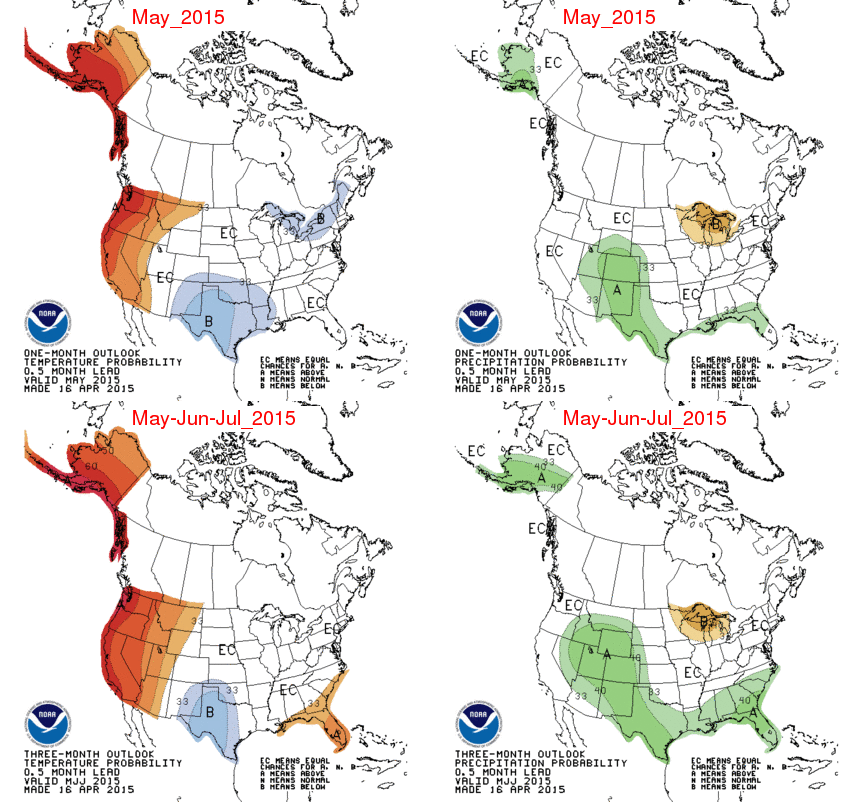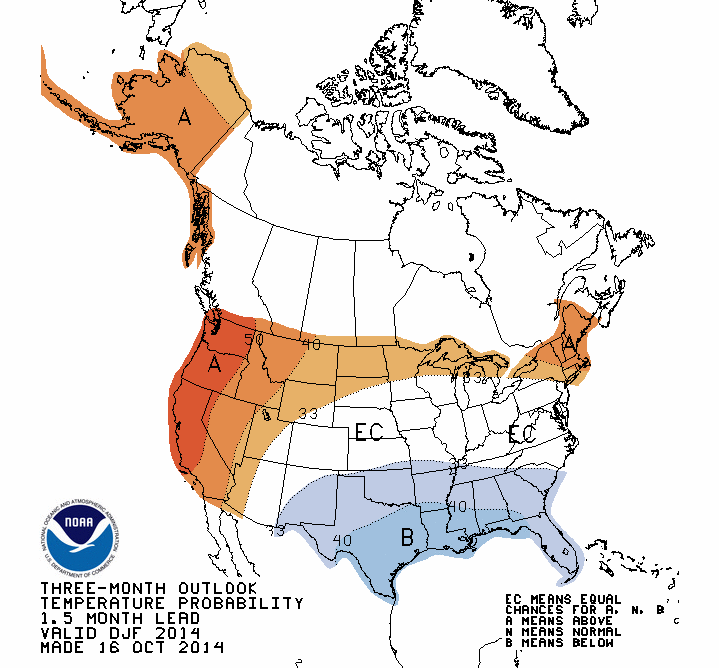The NOAA Climate Prediction Center has released their monthly and seasonal outlooks for the growing season.
In the near-future, the 6-10 and 8-14 day forecast indicate that colder-than-average conditions will prevail for the next two weeks. For precipitation, there is an increased chance of drier-than-average conditions in parts of northern Illinois for the next two weeks.
There is not a lot to report for Illinois at the medium range. We are in equal chances (EC) for above-, below-, and near-average temperature and precipitation for both May and the 3-month period of May-July.
Continue reading “NWS Outlook for the Growing Season in Illinois”







